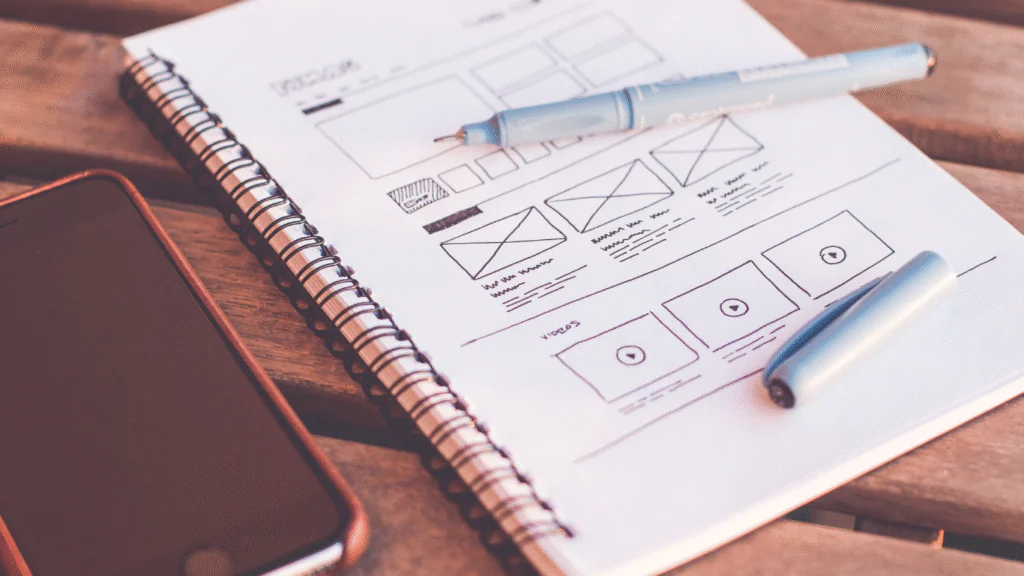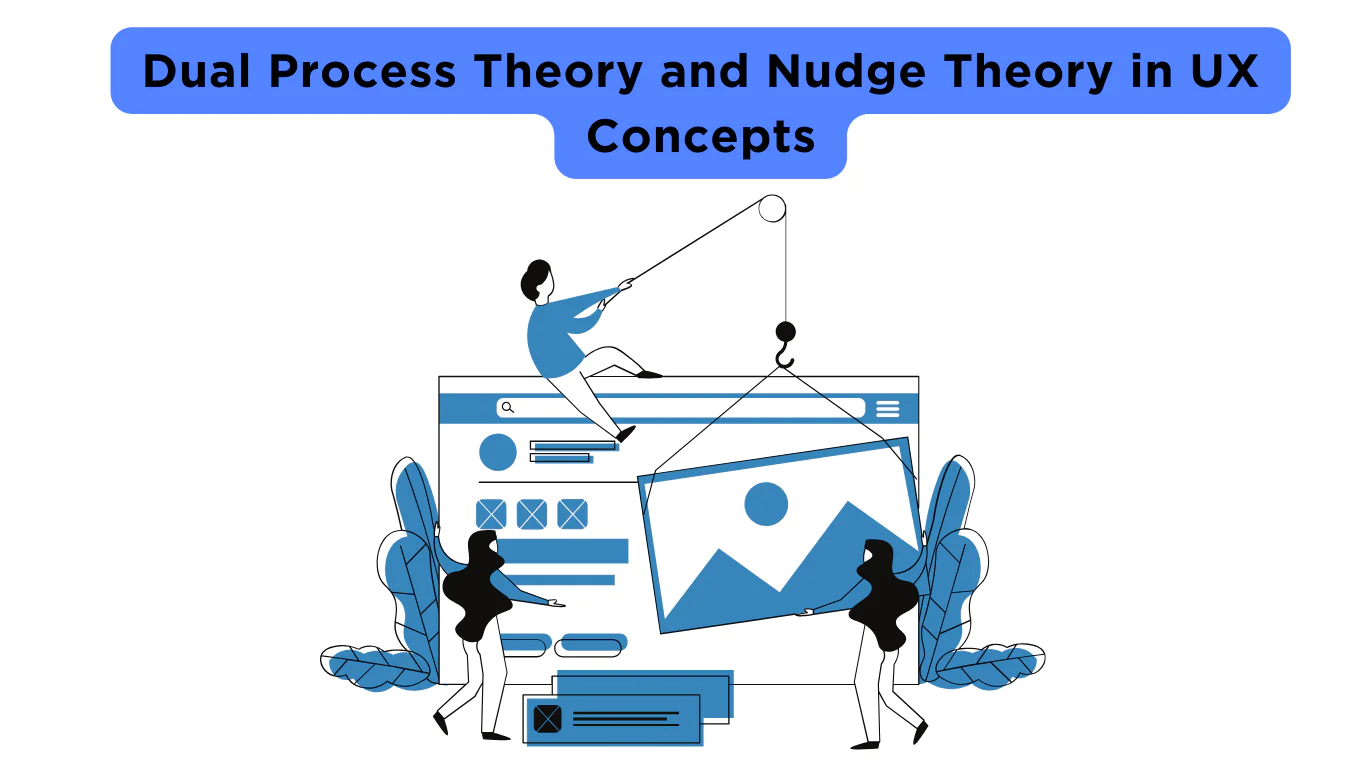In the dynamic world of user experience (UX) design, understanding user behavior is crucial to creating intuitive, user-centered products. Designers must consider not just how users interact with interfaces but also why they make specific decisions.
This is where psychological frameworks like Dual Process Theory and Nudge Theory come into play. These theories help explain cognitive behavior and how subtle design elements can influence user decisions.
This article provides a comprehensive exploration of these theories, how they work in UX design, and the practical benefits of applying them.
Basic Concepts of UX and Behavioral Design
User Experience (UX) design goes beyond visuals; it is about creating seamless and meaningful interactions. Behavioral design in UX uses psychological insights to enhance the decision-making process of users.
Applying theories like Dual Process Theory and Nudge Theory Concepts allows designers to address user needs more effectively and guide users gently toward desired outcomes.
What is Dual Process Theory in UX Design?
Dual Process Theory suggests that people use two different systems to make decisions:
- System 1 (Fast Thinking): This system is quick, intuitive, emotional, and automatic. It handles day-to-day actions like clicking a button or selecting a known item.
- System 2 (Slow Thinking): This system is slower, more analytical, and deliberate. It comes into play when users need to compare options, read terms, or fill out a form.
“Dual Process Theory is a powerful way of understanding human behavior in UX, which plays a central role in creating user-centered interfaces.”
In UX, recognizing these systems helps designers cater to both intuitive and thoughtful behaviors. For instance, a checkout page should be designed for quick, instinctive behavior (System 1), while a product comparison page can allow for more deliberate choices (System 2).
Learn more about the origins of Nudge Theory on BehavioralEconomics.com.
How Does Dual Process Theory Work in UX Design?
UX designers can create interfaces that support both systems:

- System 1 UX Applications:
- Use recognizable icons and CTAs.
- Maintain consistency in navigation.
- Present bite-sized information.
- Use animations or colors to guide attention.
- System 2 UX Applications:
- Offer detailed product specs or FAQ sections.
- Allow comparisons and reviews.
- Enable user customization and advanced filters.
- Provide confirmation before submission.
Benefits of Using Dual Process Theory in UX:
- Enhances ease of use.
- Reduces decision fatigue.
- Helps both new and experienced users.
- Improves overall satisfaction and engagement.
Nudge Theory Concepts in UX Design
Nudge Theory is based on the idea that people can be subtly influenced toward certain behaviors without force or restriction. Coined by Richard Thaler and Cass Sunstein, the theory emphasizes “choice architecture”—designing environments where decisions are easier and smarter.
How It Applies to UX:
Nudges are soft suggestions embedded in the interface, such as:
- Defaults: Pre-selecting the safest or most popular option.
- Social Proof: Showing user testimonials or ratings.
- Scarcity/Urgency: “Only 2 left!” or “Offer ends soon!”
- Progress Indicators: Showing a user how far they’ve come in a process.
7 Stages of the Nudge Theory in UX
- Define the Goal: Identify what you want the user to do (e.g., sign up, purchase).
- Analyze Behavior: Understand how users currently behave and their roadblocks.
- Identify Decision Points: Pinpoint where users need help making decisions.
- Design Nudges: Create prompts that gently guide behavior.
- Implement Nudges: Integrate them seamlessly into the UI.
- Measure Performance: Use A/B testing or analytics to assess success.
- Optimize Nudges: Iterate based on feedback and performance data.
What is the Difference Between Dual Process Theory and Nudge Theory in UX?
| Aspect | Dual Process Theory | Nudge Theory |
|---|---|---|
| Core Focus | Cognitive thinking systems (System 1 and 2) | Behavioral guidance without force |
| Goal | Understand decision-making patterns | Gently influence behavior |
| Design Strategy | Match interface complexity with user thinking mode | Modify choices subtly for better outcomes |
| Example | Simplifying UI for System 1, providing detail for System 2 | Pre-selecting checkboxes, using social proof |
| Implementation | Affects layout, content, and navigation | Affects microcopy, color, and placement |
In essence, Dual Process Theory helps understand how users think, while Nudge Theory helps influence what users do.
Practical Ways to Apply These Theories in UX

- Design Smart Defaults: Automatically select options users are likely to want.
- Leverage Familiarity: Use common design patterns to activate System 1.
- Provide Supporting Information: Support System 2 by offering FAQs or documentation.
- Use Visual Hierarchy: Guide users to important elements with size, color, and position.
- Highlight Benefits and Outcomes: Frame user decisions with positive messaging.
- Incorporate Feedback Loops: Immediate feedback improves learning and engagement.
- Optimize User Journeys: Identify friction points and apply nudges to ease the path.
Use Cases and Industry Examples
- E-commerce:
- Dual Process: Simple product filtering (System 1), full product descriptions (System 2)
- Nudge: Pre-selected shipping options, urgency badges
- SaaS Platforms:
- Dual Process: Onboarding wizards (System 2), dashboard shortcuts (System 1)
- Nudge: Progress bars, feature recommendations
- Health & Wellness Apps:
- Dual Process: Quick logs (System 1), trend analysis (System 2)
- Nudge: Reminders, motivational badges
- Government Services:
- Dual Process: Clear forms (System 2), intuitive navigation (System 1)
- Nudge: Auto-filled fields, “most common questions”
“These nudging patterns are especially helpful in implementing effective monetization strategies for apps, particularly in freemium models.”
Advantages of Applying These Theories in UX
- Boosts User Engagement: Users are more likely to stay and complete actions.
- Increases Conversions: Nudges drive users toward desired outcomes.
- Enhances User Satisfaction: Interfaces feel intuitive and helpful.
- Encourages Ethical Design: Focuses on guiding rather than manipulating.
- Reduces Drop-offs: Simplified paths and supportive nudges retain user interest.
Conclusion
Understanding and applying Dual Process Theory and Nudge Theory in UX allows designers to create smarter, more effective interfaces. While Dual Process Theory informs how users think—either fast or slow—Nudge Theory offers tools to shape those decisions positively. Together, they create a design environment where users feel empowered, informed, and encouraged to take the right actions.
As technology evolves, UX design must go beyond aesthetics to meet the psychological needs of users. Integrating these theories into your UX design process will not only improve usability but also create a more ethical, human-centered digital world.
FAQ.
Can Dual Process Theory be applied to all types of websites?
Yes, every website has areas where users make decisions. Understanding fast vs. slow thinking helps structure these moments more effectively.
Are nudges always ethical?
Nudges should empower users. When used transparently and to improve user experience, they remain ethical.
How do I test if a nudge is working?
Use A/B testing tools, heatmaps, and user feedback to evaluate the effectiveness of nudges.
How do I avoid overwhelming System 2 users?
Break down complex tasks, offer help tooltips, and minimize the number of decisions per screen.
Can I use both theories together in a single design?
Absolutely. Using them together leads to a powerful UX strategy that is both insightful and persuasive.

I am working as a App Developer. When i was in college that time if i need to learn something new then i didn’t find the proper guidance from the internet. Well, i am very curious about learning new things. And yah it’s true most of my knowledge i got from the internet. That is why i was made this website to learn and get more knowledge about technology. The whole idea behind this website is to help people to improve their knowledge and skills.

